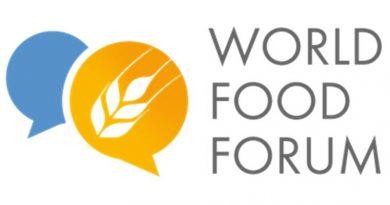See the List of 16 insects approved by Singapore to be eaten as food
Singapore has approved 16 types of insects for human consumption, including crickets, grubs, moth larvae, and a specific species of honeybee. This decision aligns with the FAO’s efforts to promote insect consumption as a sustainable protein source.
What are the species designated for human consumption?
Singapore has approved 16 insect species for human consumption, including crickets, grasshoppers, locusts, and honeybees in adult form, as well as mealworms, grubs, and moths in larval stages. Skye Blackburn, an advocate for insect consumption, is impressed by Singapore’s openness to edible insects. In various stages of growth: In the adult stage are four crickets, two grasshoppers, a locust and a honeybee. In the larval stage are three kinds of mealworm, a white grub and a giant rhino beetle grub, as well as two species of moth. Silkworm moths and silkworms (different stages of the same species) can both be eaten, according to the guidelines.
House of Seafood in Singapore is set to introduce 30 insect-based dishes, including sushi with silkworms and crickets, salted egg crab with superworms, and “Minty Meatball Mayhem” – meatballs topped with worms. The Singaporean authorities have approved the import of various insect products, including insect oil, uncooked pasta with insects, and chocolate with up to 20% insect content. This move is seen as encouraging as it includes species not yet commercially farmed for consumption.
Other places insects are eaten
A recent study in Scientific Reports found that insects are consumed in 128 countries, with 2,205 species being eaten. Asian countries consume the most species, followed by Mexico and African countries. In Thailand, India, the Democratic Republic of Congo, and China, a wide variety of insects are consumed, while Brazil, Japan, and Cameroon each consume over 100 species. Chefs in Singapore can explore and import creative insect recipes from around the world, where insects are prepared in various ways. Insect products are available globally in restaurants, markets, supermarkets, and vending machines. The European Union is working on approving more insects as a “novel food source”, while Australia has only approved three species so far.
Blackburn explains that drone bees are removed from hives to combat varroa mites infestation, as they are the ones that usually house these pests. Consequently, drone bees are utilized as a food source due to this reason. Additionally, in certain African and Asian nations, female bees are also consumed, with their venom becoming denatured when cooked. These bees are typically eaten ground or stir-fried. Blackburn, who has tried drone bees, describes their taste as similar to “sweet butter”, having a mild and sweet flavor. In Cambodia, bee pupa cooked in honeycomb is a popular street snack, resembling rich waffles or small choux pastry puffs.
Why does the UN want us to eat insects?
Due to the current climate situation, insects are a more sustainable protein source than livestock. They have a high conversion rate, meaning they efficiently convert plant energy into protein. According to the FAO, crickets require significantly less feed than cattle, sheep, pigs, and broiler chickens to produce the same amount of protein. Additionally, they can be farmed indoors, require less space and water, and produce lower emissions. This makes them a viable source of income for individuals with limited access to land or livestock farming training.
Companies must clearly label products containing insects as per SFA regulations, but some may not appear to do so. Altimate Nutrition plans to market protein bars that look like typical bars but actually contain crickets. Carmine, derived from shellac beetles, is commonly used in food products. Shiny candy shells are made from lac bug resin, and insect-derived products like honey are also common. Animals consumed by humans may have been fed insect protein, with the FAO suggesting insects as a supplementary food source for livestock. SOURCE: original article published by TheGuardian.com. Article by Helen Sullivan




